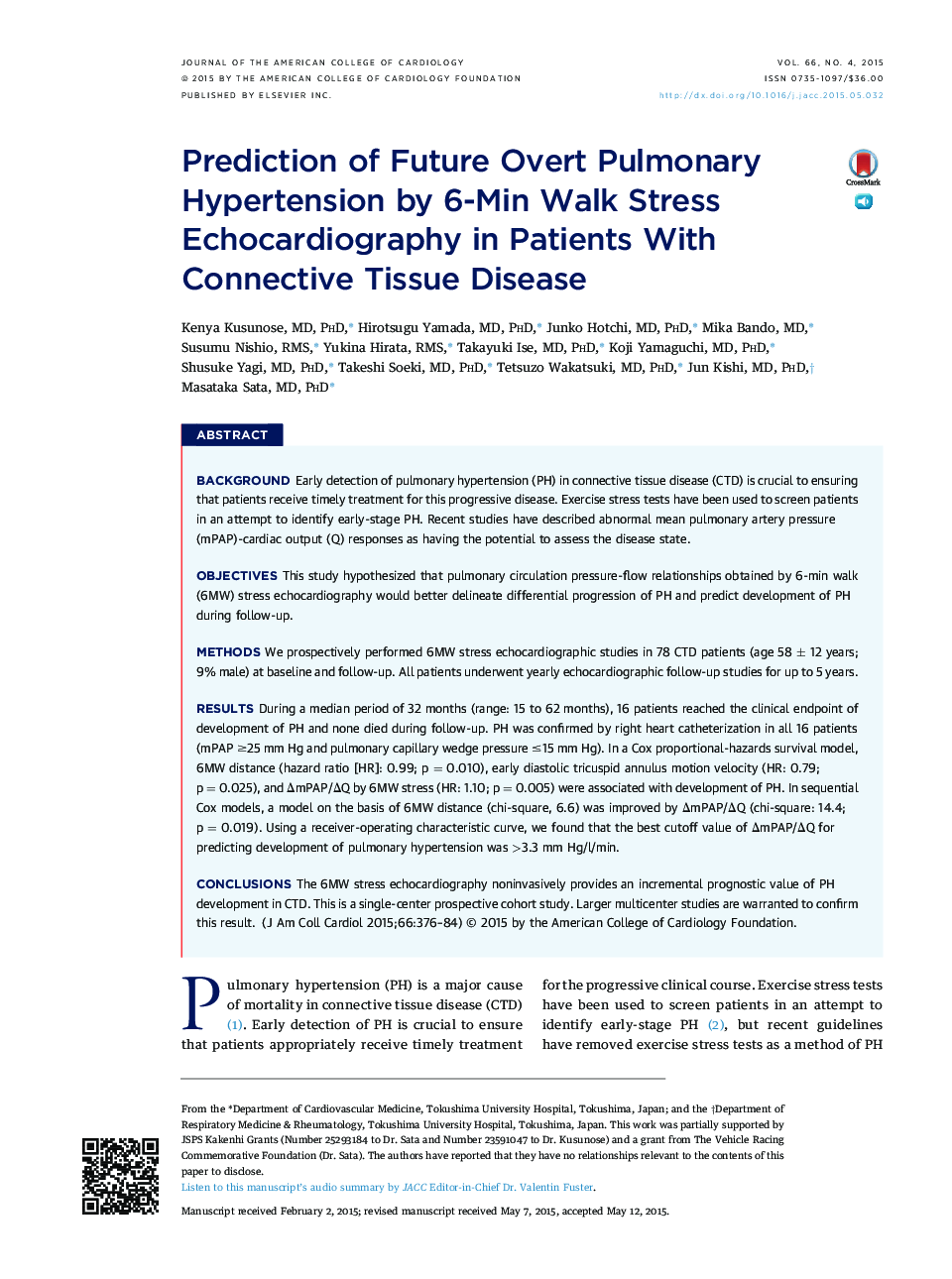| Article ID | Journal | Published Year | Pages | File Type |
|---|---|---|---|---|
| 2943953 | Journal of the American College of Cardiology | 2015 | 9 Pages |
BackgroundEarly detection of pulmonary hypertension (PH) in connective tissue disease (CTD) is crucial to ensuring that patients receive timely treatment for this progressive disease. Exercise stress tests have been used to screen patients in an attempt to identify early-stage PH. Recent studies have described abnormal mean pulmonary artery pressure (mPAP)-cardiac output (Q) responses as having the potential to assess the disease state.ObjectivesThis study hypothesized that pulmonary circulation pressure-flow relationships obtained by 6-min walk (6MW) stress echocardiography would better delineate differential progression of PH and predict development of PH during follow-up.MethodsWe prospectively performed 6MW stress echocardiographic studies in 78 CTD patients (age 58 ± 12 years; 9% male) at baseline and follow-up. All patients underwent yearly echocardiographic follow-up studies for up to 5 years.ResultsDuring a median period of 32 months (range: 15 to 62 months), 16 patients reached the clinical endpoint of development of PH and none died during follow-up. PH was confirmed by right heart catheterization in all 16 patients (mPAP ≥25 mm Hg and pulmonary capillary wedge pressure ≤15 mm Hg). In a Cox proportional-hazards survival model, 6MW distance (hazard ratio [HR]: 0.99; p = 0.010), early diastolic tricuspid annulus motion velocity (HR: 0.79; p = 0.025), and ΔmPAP/ΔQ by 6MW stress (HR: 1.10; p = 0.005) were associated with development of PH. In sequential Cox models, a model on the basis of 6MW distance (chi-square, 6.6) was improved by ΔmPAP/ΔQ (chi-square: 14.4; p = 0.019). Using a receiver-operating characteristic curve, we found that the best cutoff value of ΔmPAP/ΔQ for predicting development of pulmonary hypertension was >3.3 mm Hg/l/min.ConclusionsThe 6MW stress echocardiography noninvasively provides an incremental prognostic value of PH development in CTD. This is a single-center prospective cohort study. Larger multicenter studies are warranted to confirm this result.
